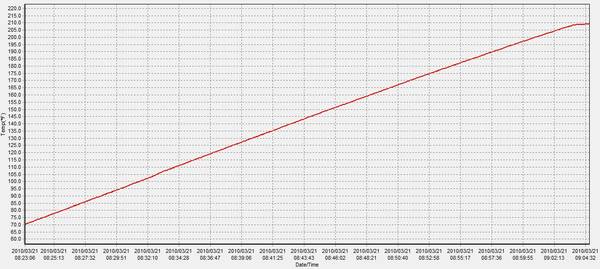Here is a perfect example. This place claims that 54,000 BTUs/hr will bring 7.5 gallons to a boil in just 9.8 mins. Unless I am mistaken, this would mean that there is only 6% efficiency going on here. They state to be safe to double the heating time. So we are now at 20 minuets to a boil. So this would mean that his burner is only about 25,000 BTUs. I am just learning this stuff so I could very well be wrong.
I copied this from here,
http://www.lalagniappe.com/mall/lobbycookerfaq.htm
Q. How many BTUs do I need?
A BTU (British Thermal Unit) is the amount of energy required to raise 1 lb of water 1 degree Fahrenheit. You will usually see propane burners rated in BTU's, but what they mean is BTU's/hr.
Here is a simple way to see how many BTUs you need for your pot size. Water density is 8.3 lb/gal. To raise 1 gallon of water (1 x 8.3 = 8.3 lbs) from 70 to 212 deg F in 1 hour you will need 8.3 x 142 = 1,178.6 BTUs.
Using this BTU requirement for each gallon of water you can figure out how many BTUs would be required to boil your pot of water in one hour. For example a 30 quart pot (7.5 gallons) (full) would require 7.5 X 1,178.6 BTUs = 8,839.5 BTUs to bring the pot to a boil in one hour, assuming 100% efficiency. Of course 100% efficiency isn't realistic. Assuming 100% efficiency a 54,000 BTU/hr cast burner should bring that pot to a boil in 8,839.5 / 54,000 BTUs = .16369 hours or 9.8 minutes. Anyone that has ever tried to bring a full 30 quart pot to a rolling boil knows that it doesn't happen that quickly.
How much heat is lost before it even gets to the pot is hard to calculate. Outside temperature and wind each can negatively impact the efficiency of the heat transfer from the flames to the pot. A safe estimate would be 50% efficiency, so doubling the heating time would probably be realistic.
Evaporation takes away heat and to hold a rolling boil will require additional heat besides that required to raise it to a boil. Without going into a technical explanation just take my word that boiling away 1 gallon of water per hour will require approximately 8,000 BTUs/hr.
So, a 54,000 BTU burner should comfortably boil a 30 quart pot in 20 minutes or less and comfortably hold that pot at a rolling boil. However, if you move to a 60 quart pot, the heating time doubles and now you are sitting around for 40 minutes or more waiting for the pot to boil. Somewhere between a 30 quart pot and a 60 quart pot you probably need to move to a jet burner which produces 110,000 BTUs and therefore cuts the heating time approximately in 1/2.
Be skeptical of BTU/hr output claims.




